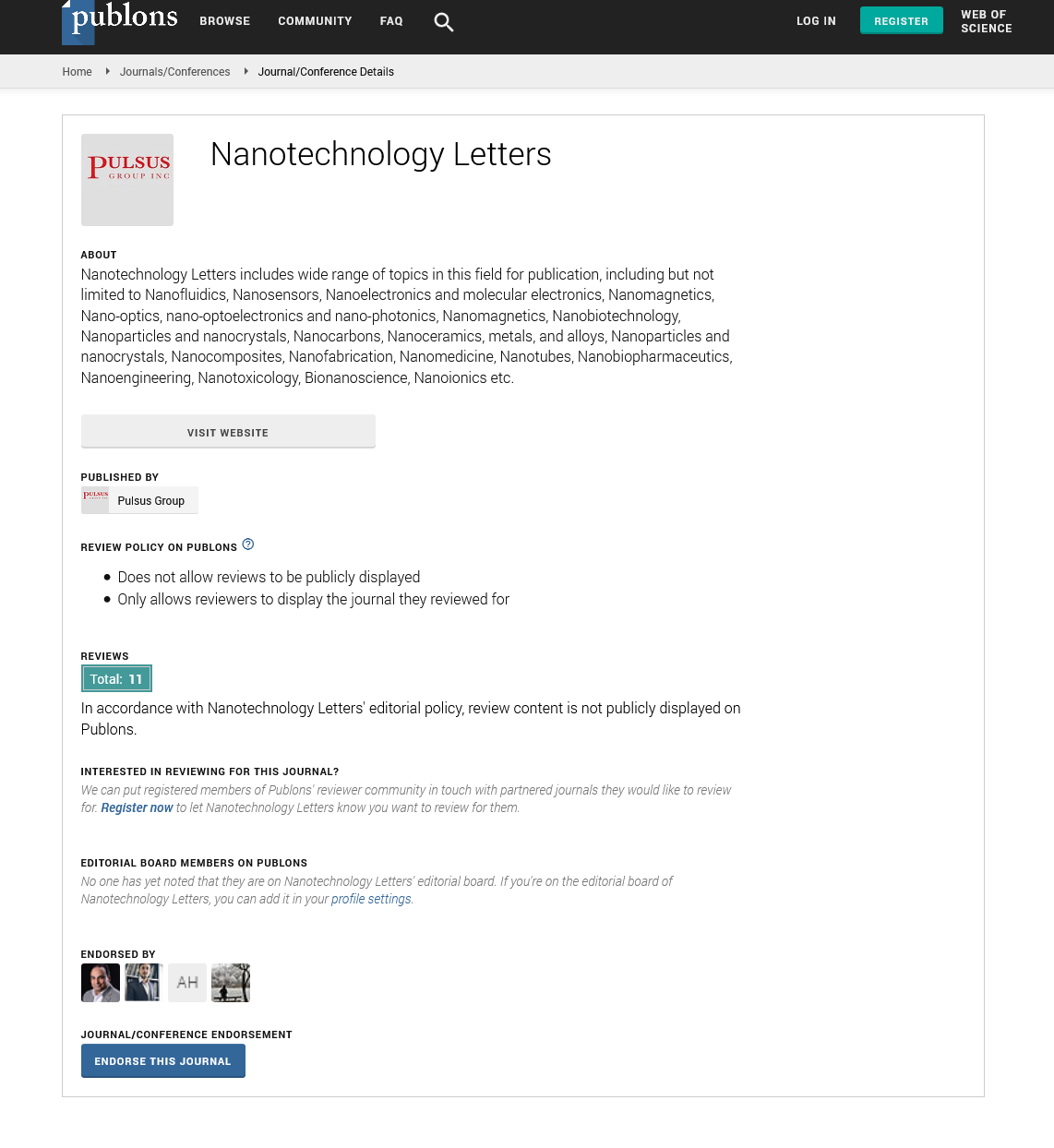Classifications and behavior of different types of biomaterials
Received: 04-Nov-2021 Accepted Date: Nov 18, 2021; Published: 25-Nov-2021
Citation: Rosales M. Classifications and behavior of different types of biomaterials. Nanotechnol Lett. 2021;6(2):7.
This open-access article is distributed under the terms of the Creative Commons Attribution Non-Commercial License (CC BY-NC) (http://creativecommons.org/licenses/by-nc/4.0/), which permits reuse, distribution and reproduction of the article, provided that the original work is properly cited and the reuse is restricted to noncommercial purposes. For commercial reuse, contact reprints@pulsus.com
Description
The term biomaterial has many definitions, often including: It is a non-viable substance or combination of substances. This substance is used to replace, regenerate, repair, or improve body parts, tissues, or organs in terms of structure and / or function (partially or completely). Biomaterials generally fall into three classes: metals, ceramics, and polymers. Important research has examined the production of composites of these materials, combining their benefits. In hard tissue engineering, there are various nanofabrication techniques for achieving nano-range topography. Metal is a good conductor of heat and electricity, is malleable and can be driven into sheet metal and ductility (it can be pulled into a wire). Most metals are solid at room temperature and have a characteristic silvery luster. Ten examples of metals are aluminum, copper, iron, tin, gold, lead, silver, titanium, uranium, and zinc. Well-known alloys are bronze and steel. Polymers are a class of natural or synthetic substances made up of very large molecules called macromolecules. Macromolecules are multiples of simpler chemical units called monomers. Polymers make up many materials in living organisms and are the basis of many minerals and man-made materials. Five examples of synthetic polymers include nylon, polyethylene, polyester, Teflon and epoxies. Natural macromolecules occur naturally and can be extracted. They are often water-based. Examples of naturally occurring polymers are silk, wool, DNA, cellulose, and proteins. Ceramic is a material that is neither metallic nor organic. Ceramics are usually hard, chemically non-reactive and can be molded or compacted by heat. Pottery is more than pottery and tableware. Clay, brick, tile, glass and cement are probably the best known examples.
Classification of biomaterials: Biomaterials are divided into two types: bioinactive biomaterials and bioactive biomaterials. The term bioinert refers to a substance that, when introduced into the human body, minimizes its interaction with surrounding tissues. Examples include stainless steel, titanium, alumina, partially stabilized zirconia, and ultra-high molecular weight polyethylene. In general, fibrotic capsules can form around bioinert implants, so their biological function is based on tissue integration through the implant. Bioabsorbability is a material that dissolves (absorbs) when introduced into the human body and slowly replaces progressive tissues (such as bone). Common examples of bioabsorbable materials are tricalcium phosphate [Ca3 (PO4) 2 ] and polylactic acid-polyglycolic acid copolymers.
Calcium oxide, calcium carbonate and gypsum are other common materials that have been used for the past 30 years. In current medical practice, biomaterials are used in medical implants such as heart valves, stents and implants. Artificial joints, ligaments and tendons; implants for deafness; dental implants; devices that stimulate nerves. A method of promoting healing of human tissue, including sutures, clips and staples for wound closure and soluble bandages. Human tissue regenerated using a combination of supports or scaffolds made from biomaterials, cells, and bioactive molecules. Examples of include bone regeneration hydrogel and laboratory-grown human bladder. Molecular probes and nanoparticles that break biological barriers and support cancer imaging and treatment at the molecular level. A biosensor for detecting the presence and amount of a particular substance and transmitting this data. Examples include glucose meters and brain activity sensors. A drug delivery system that transports drugs and / or applies them to disease targets. Examples include drug-coated vascular stents and implantable chemotherapeutic wafers for cancer patients.






